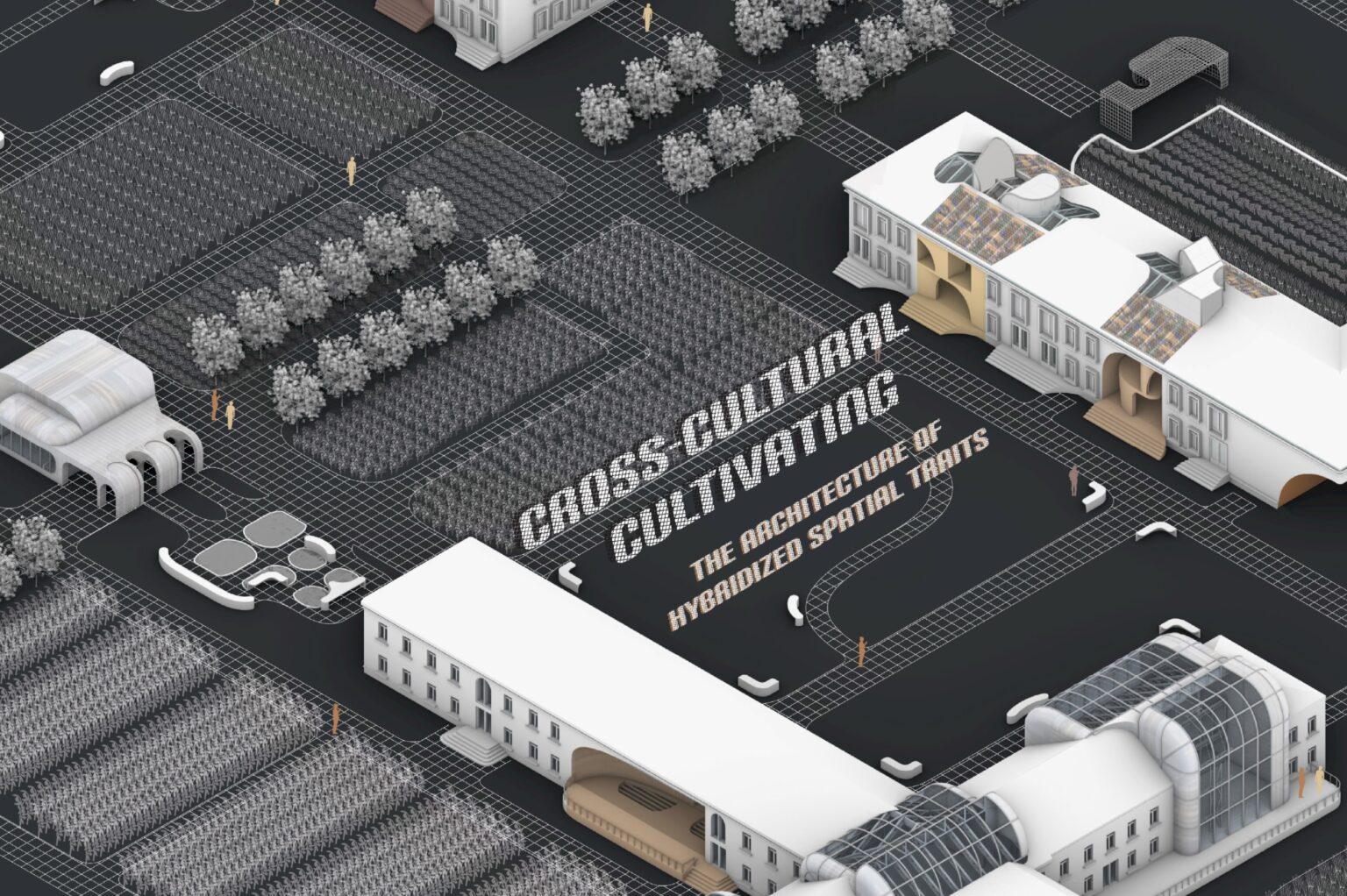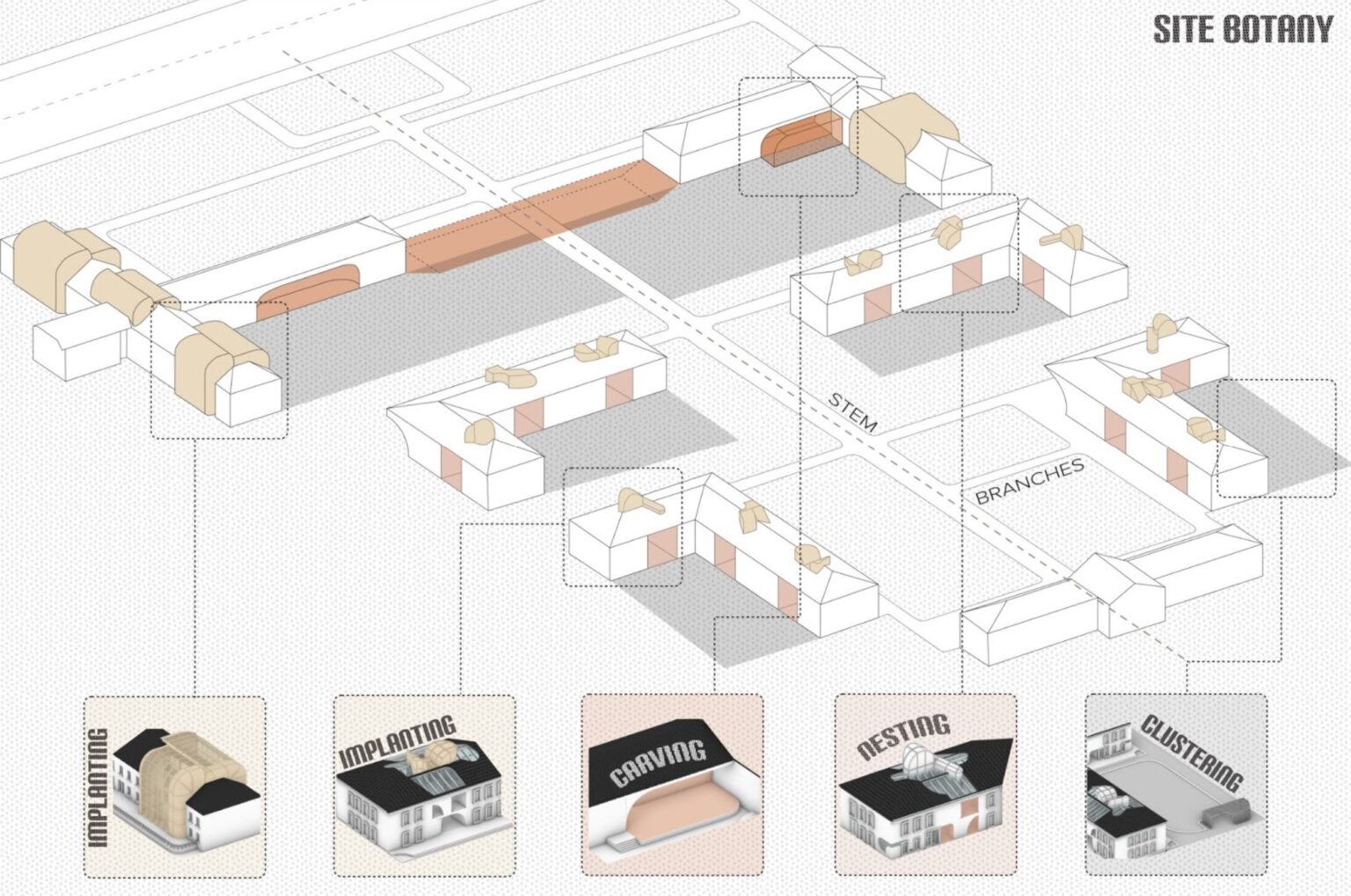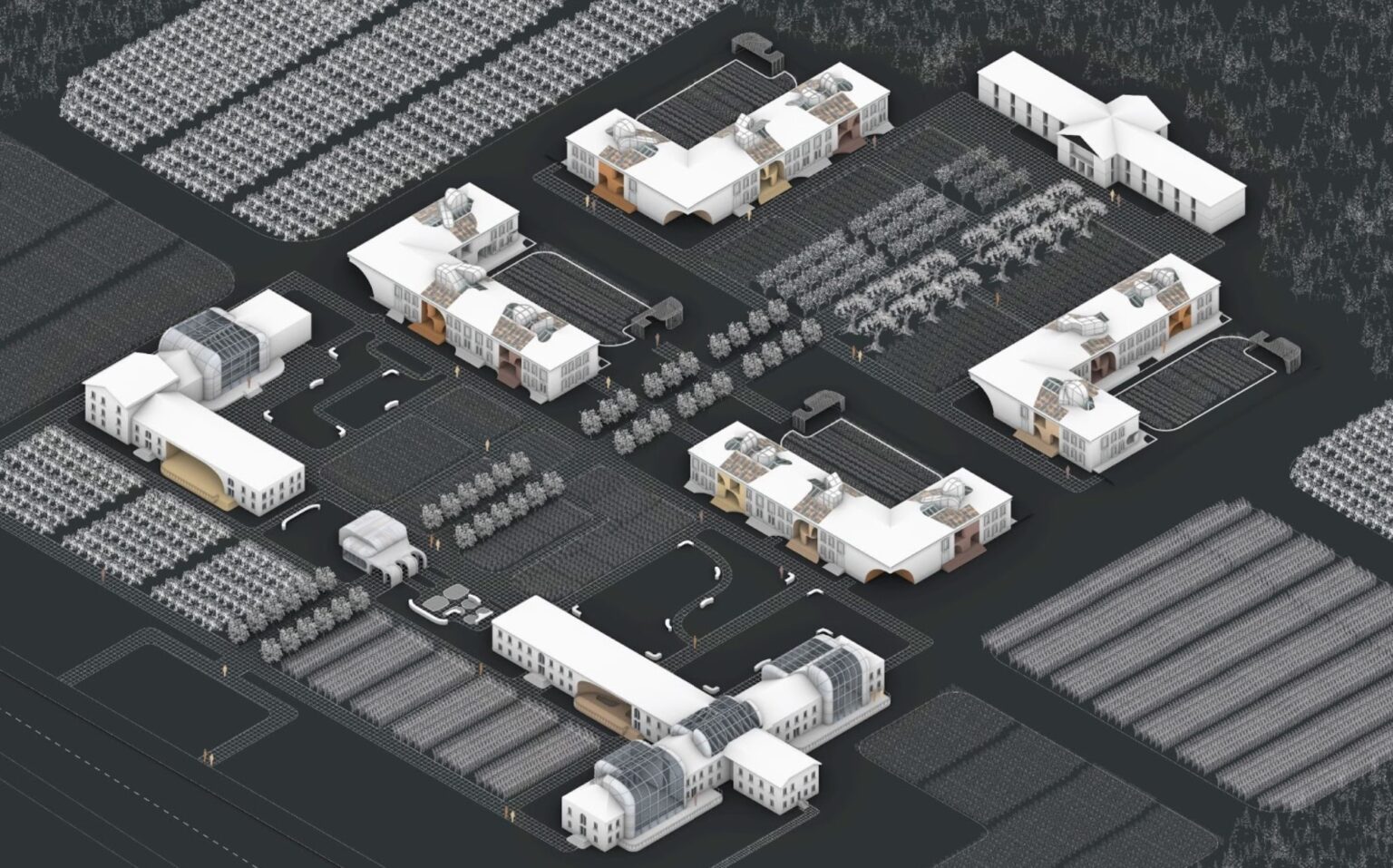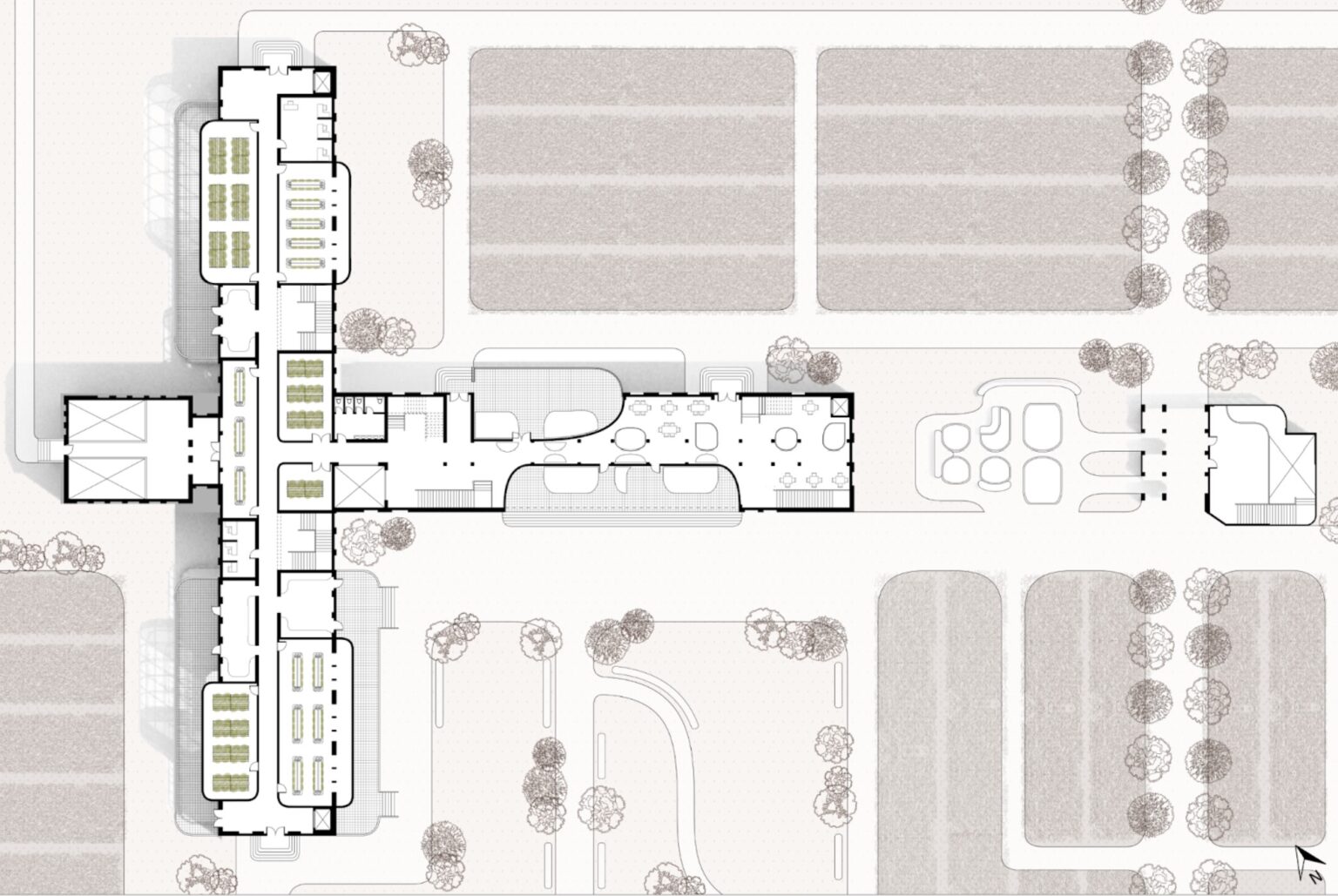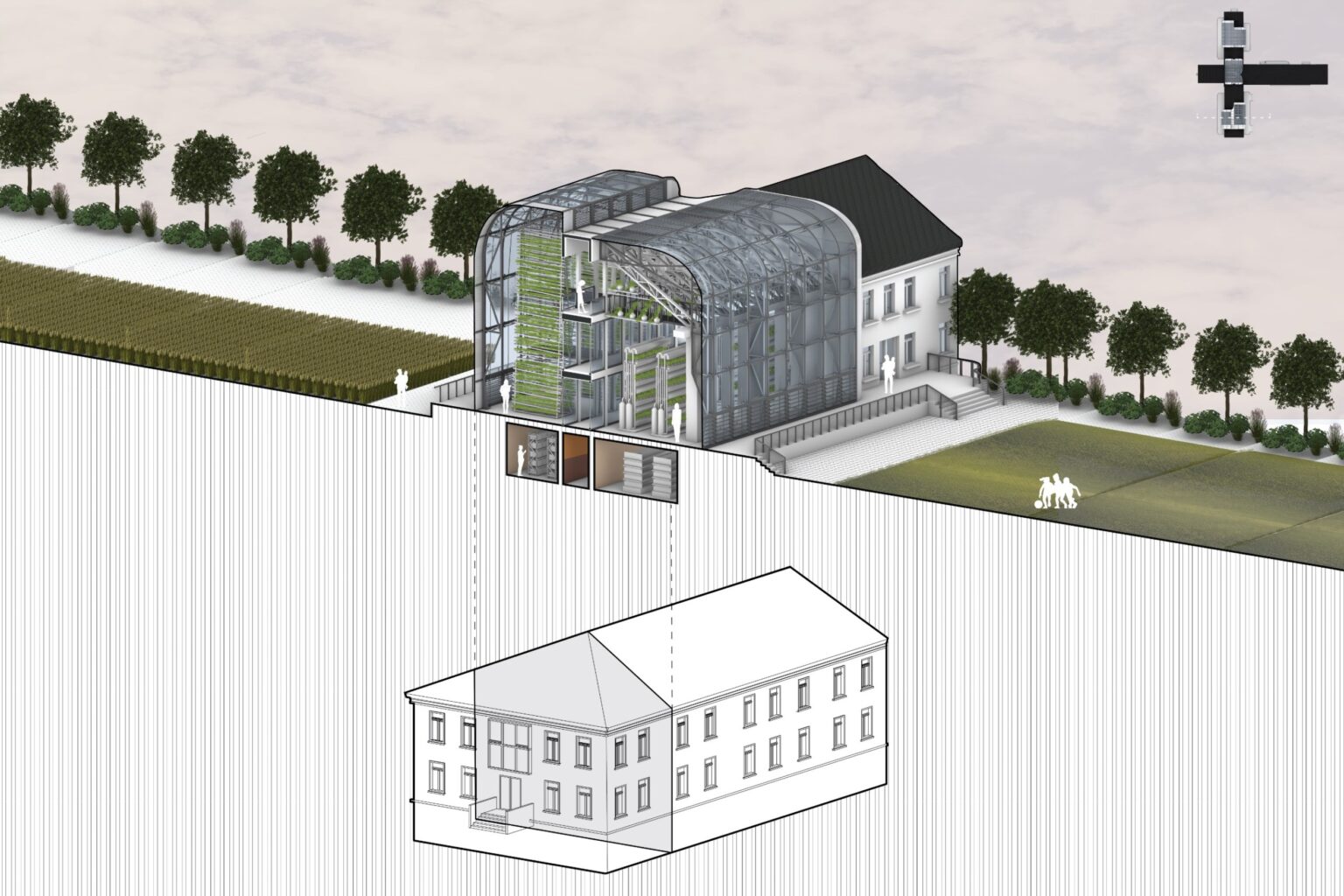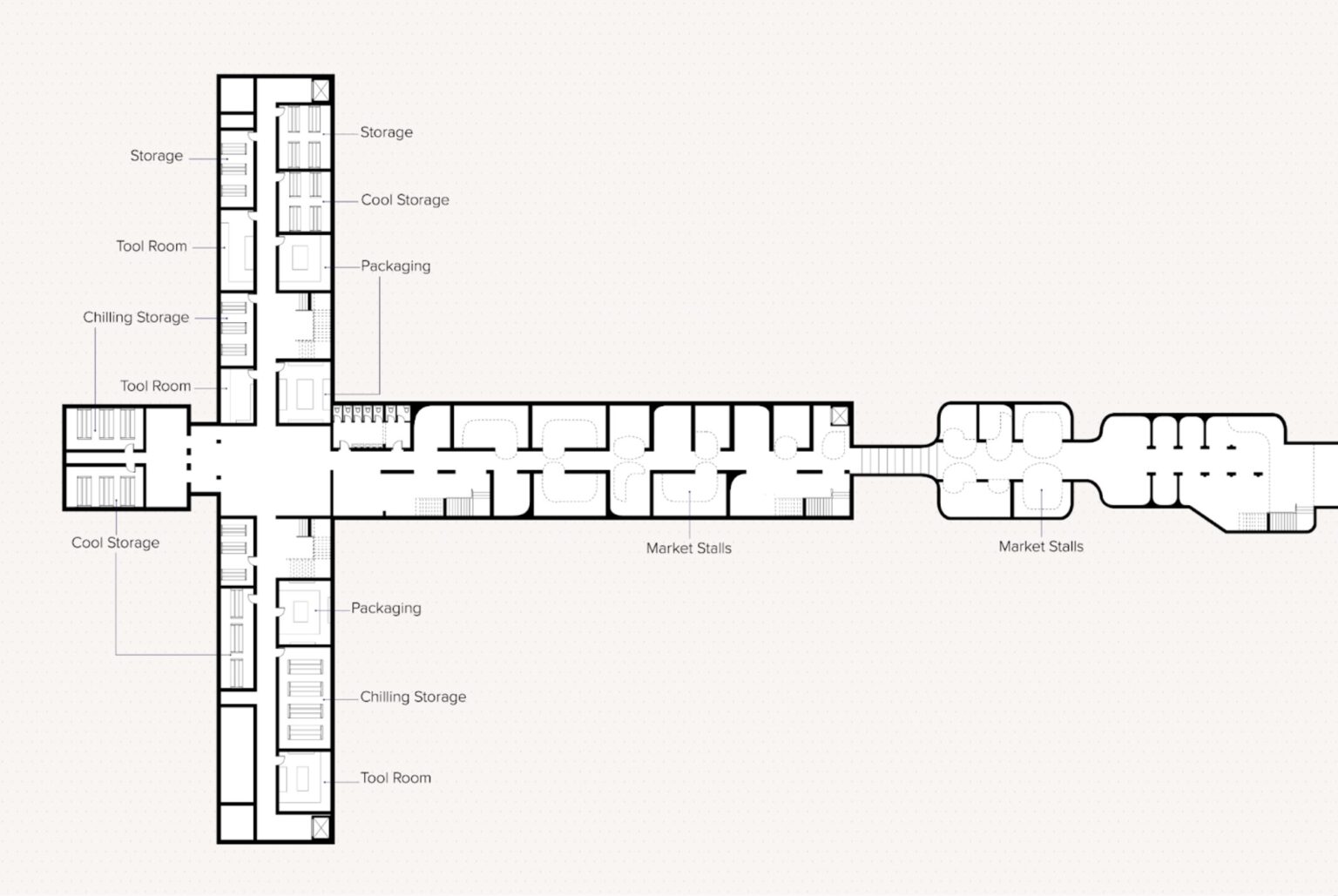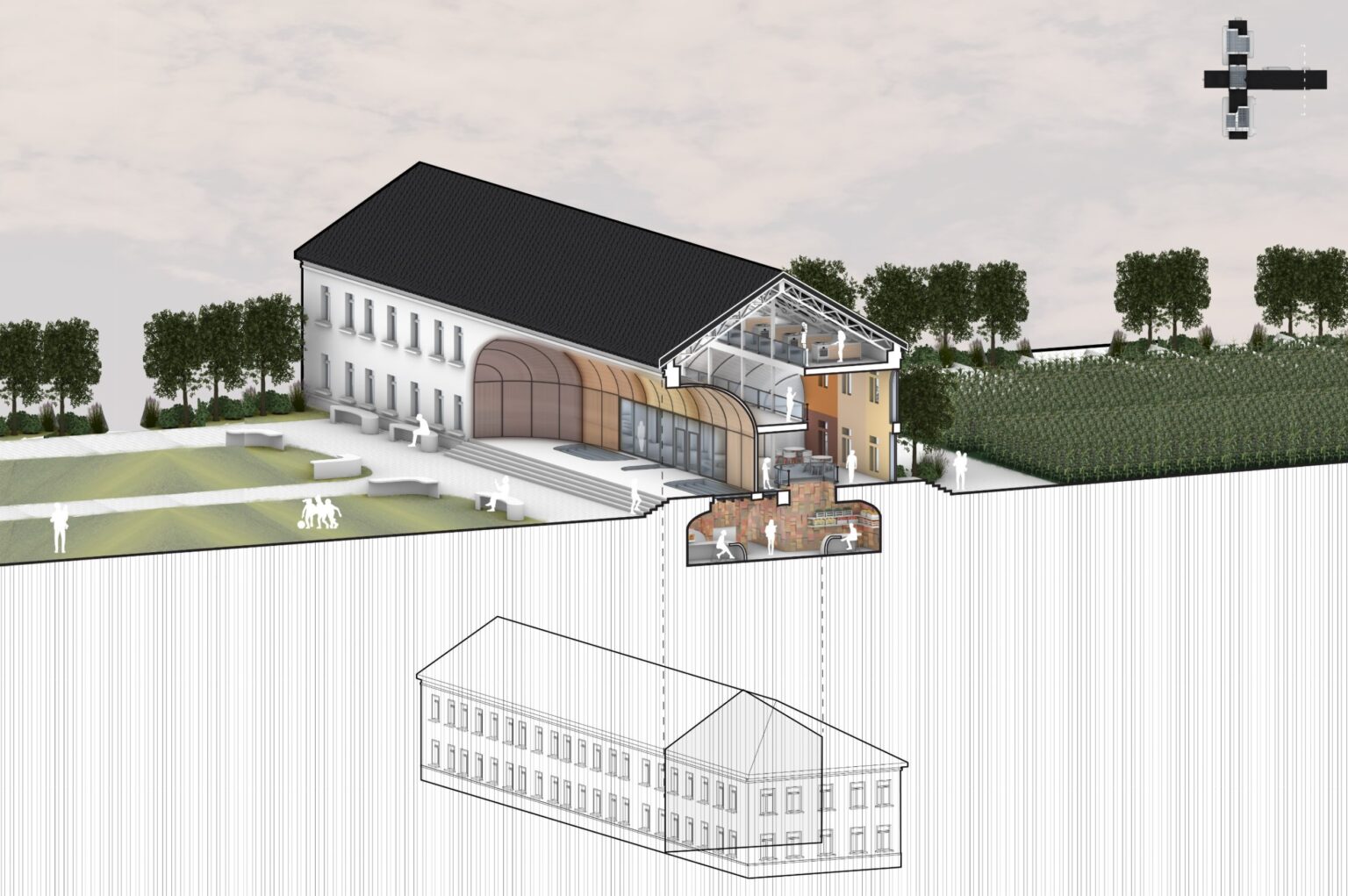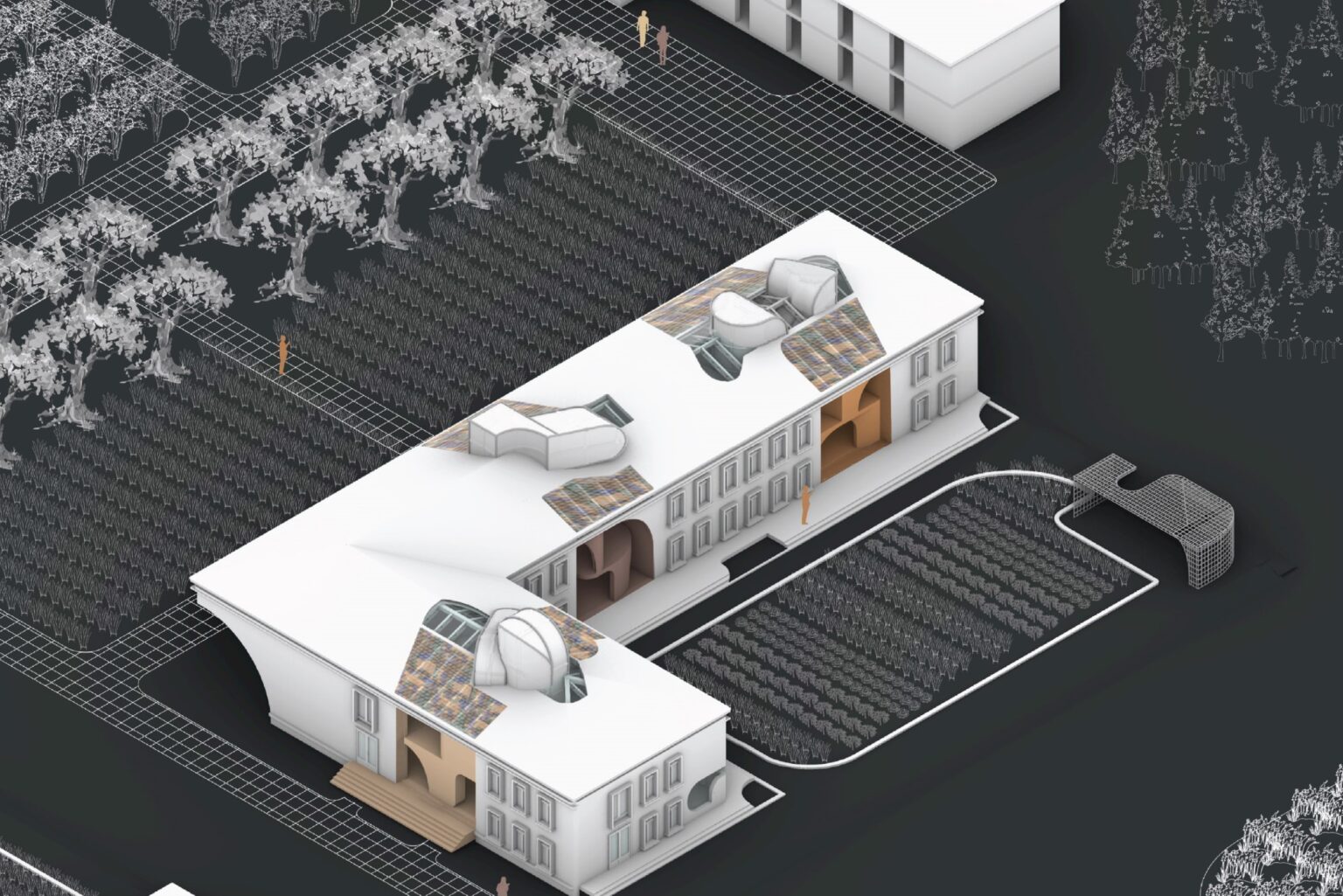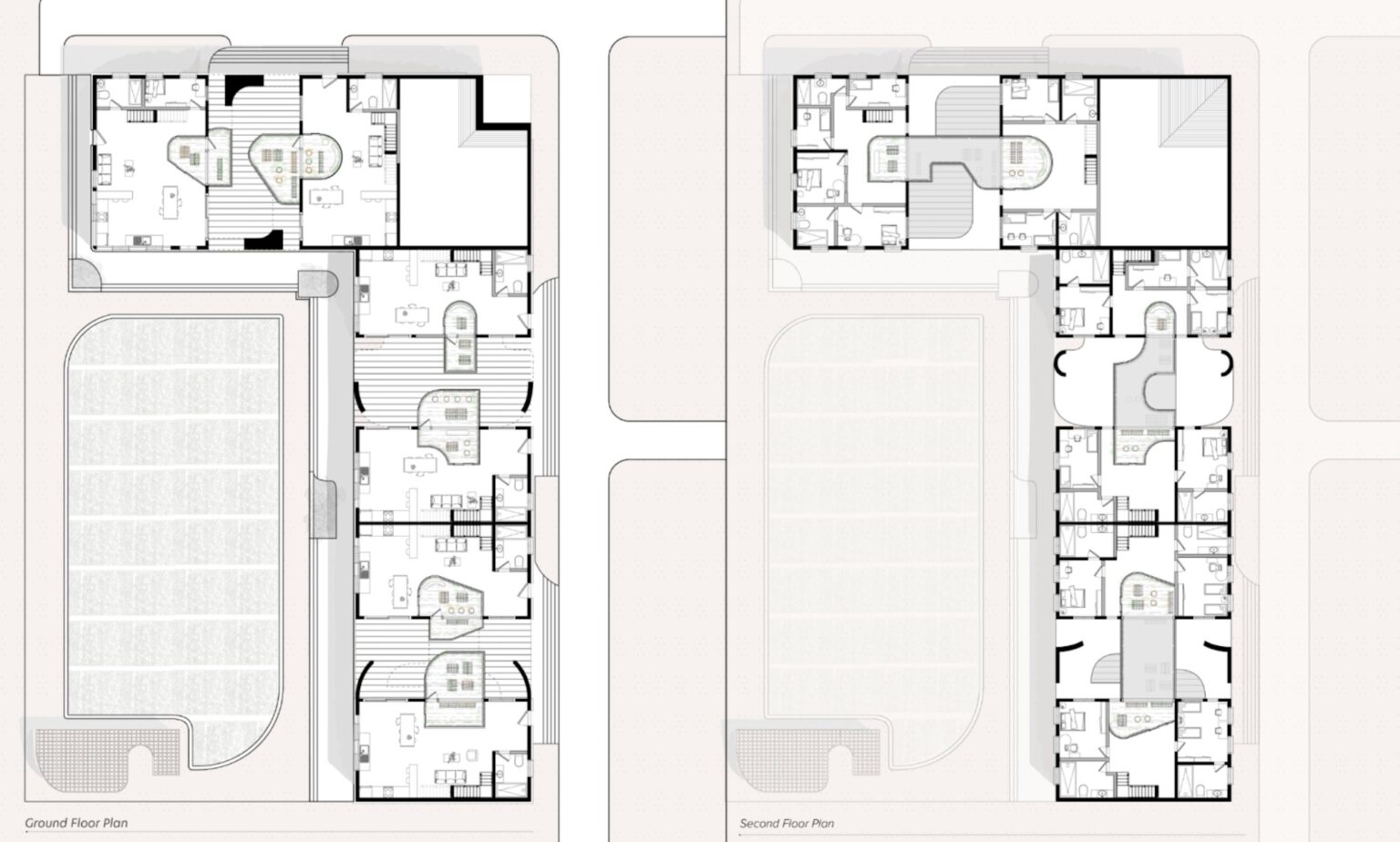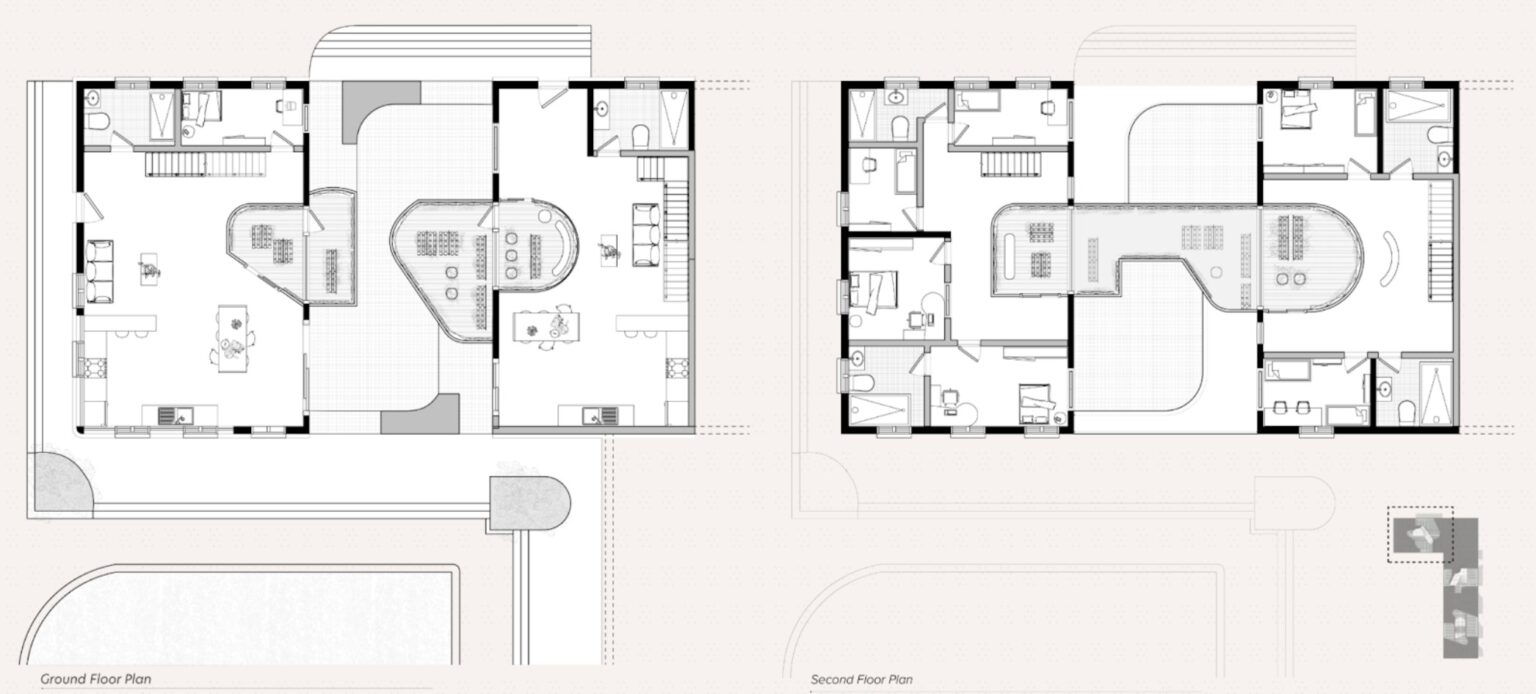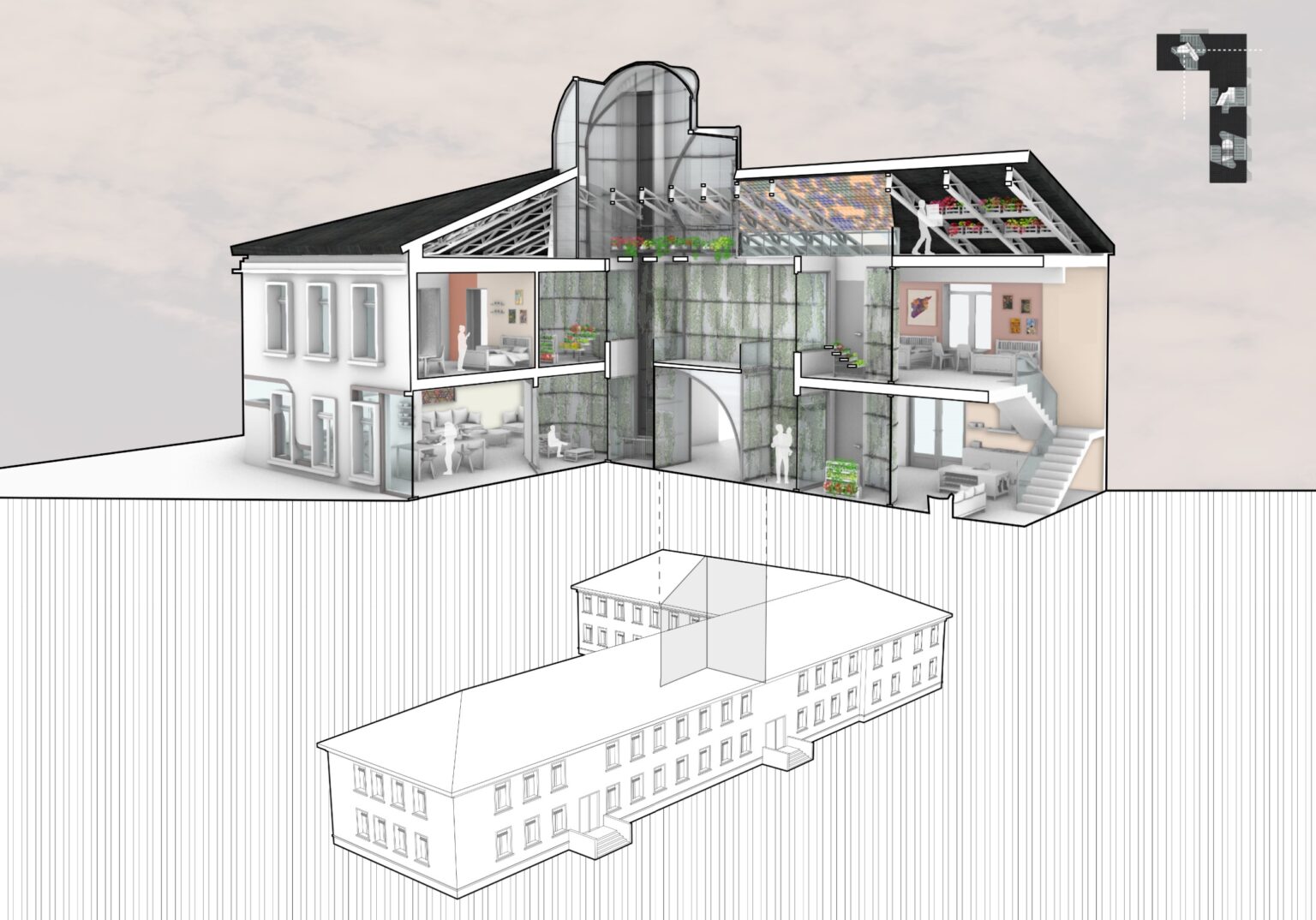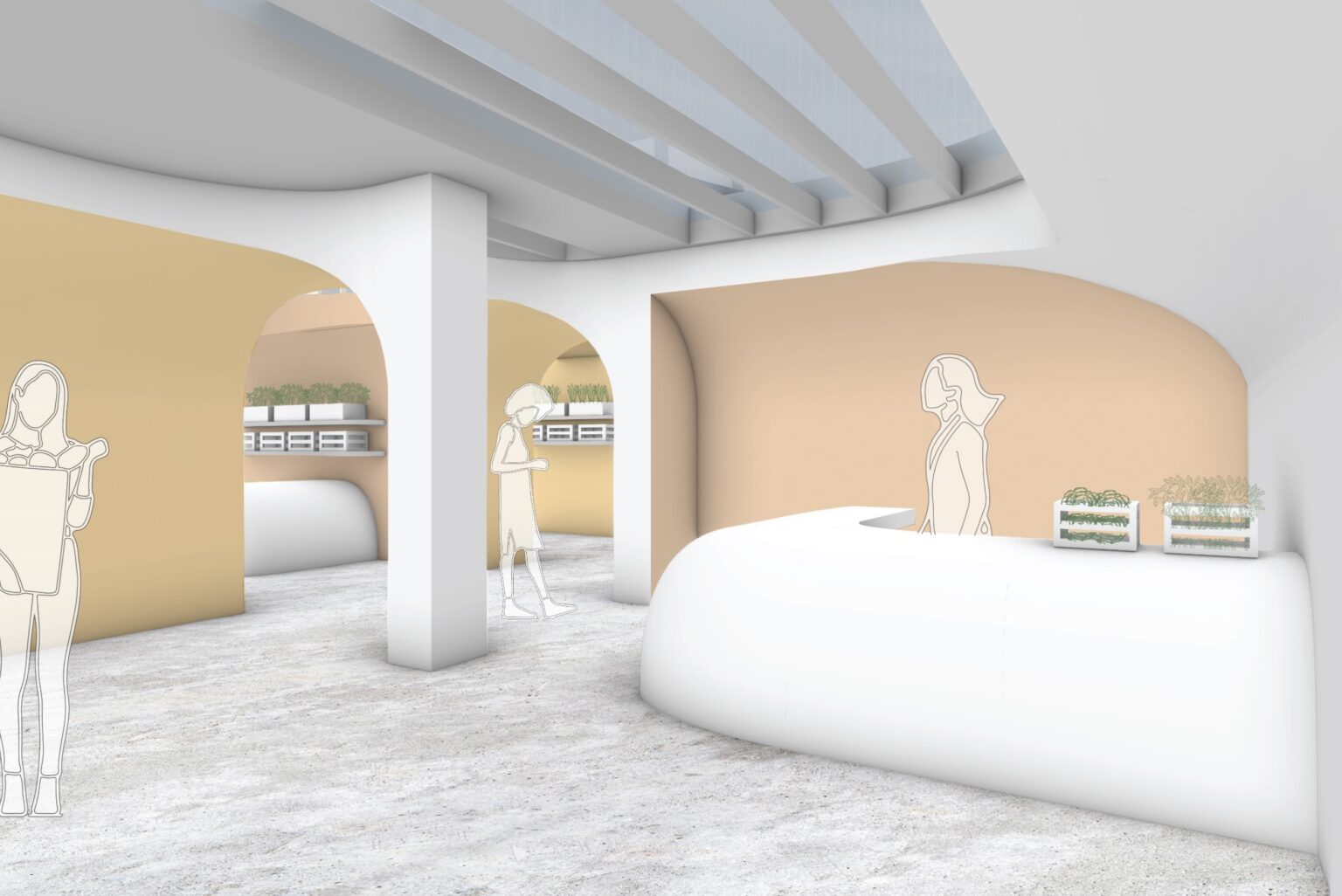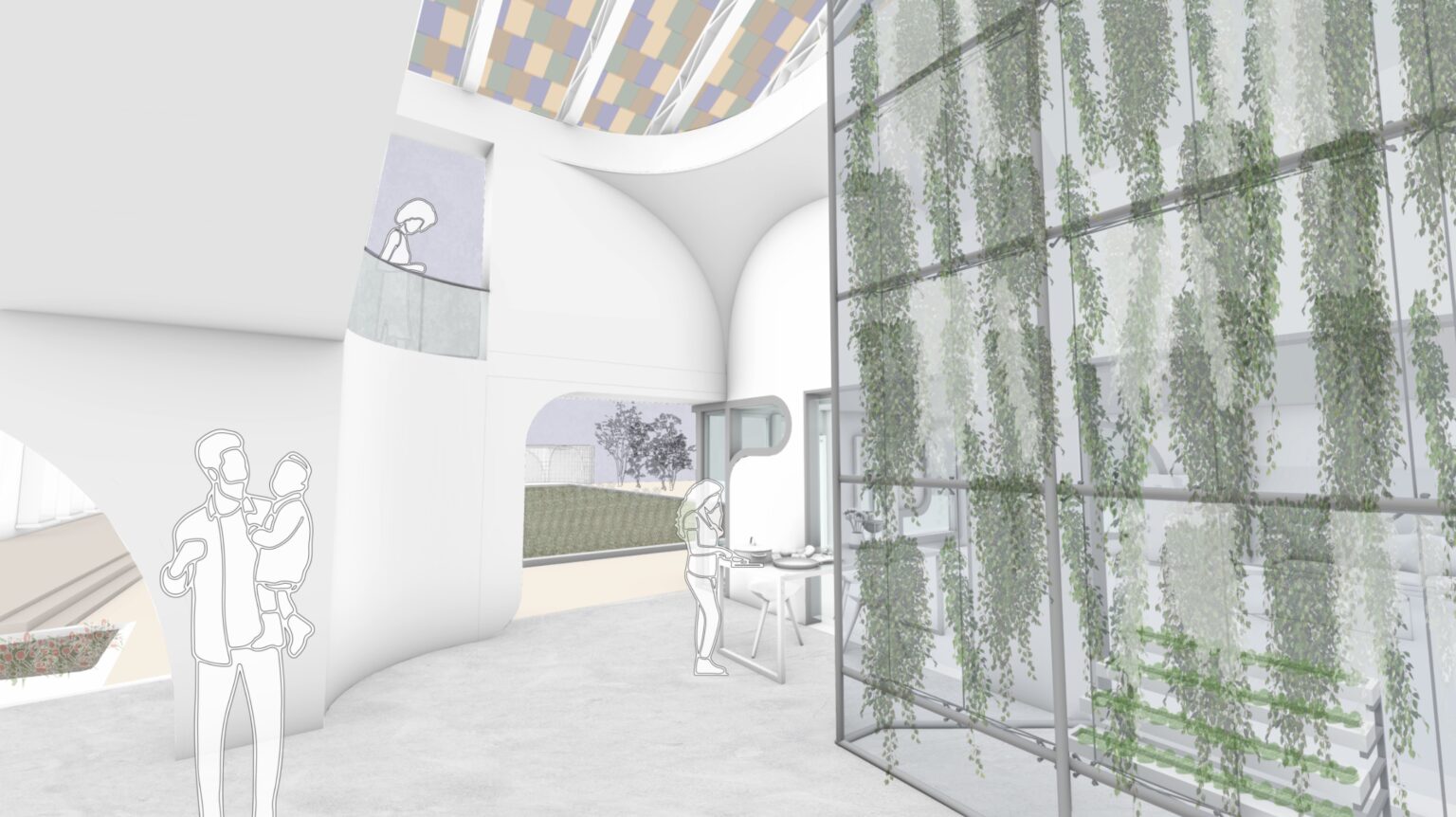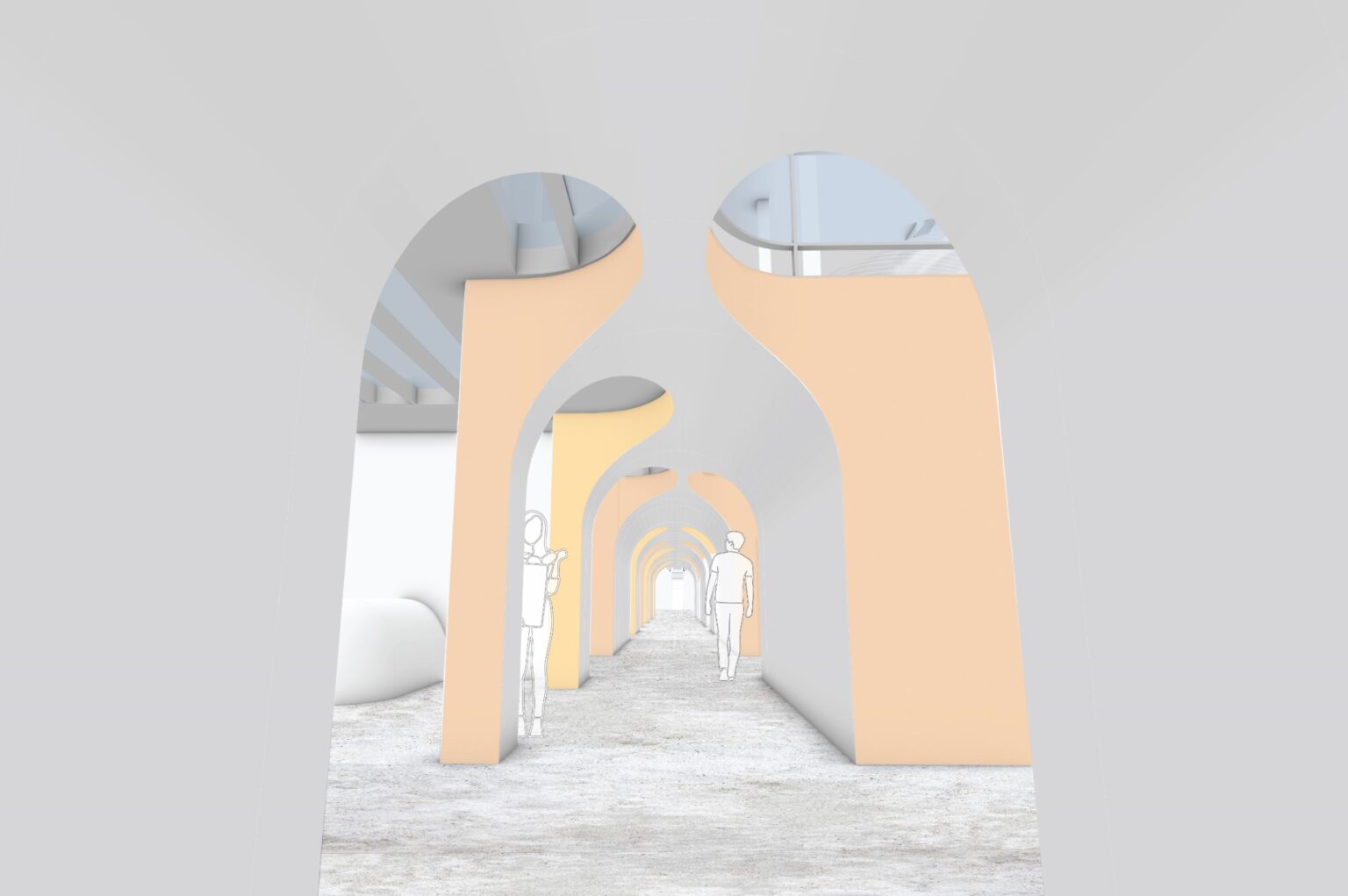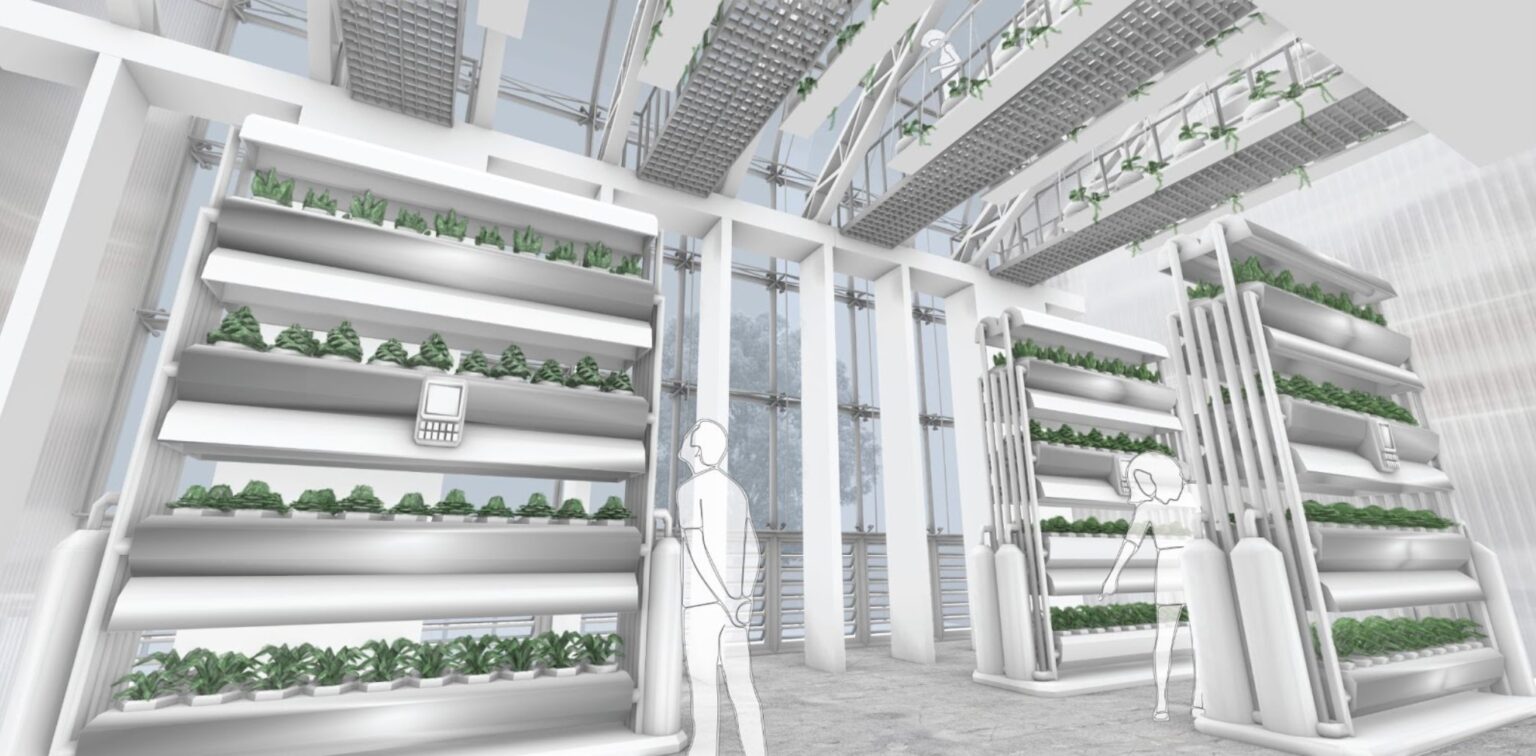Cross-Cultural Cultivating
Victoria Jaime
Cross-Cultural Cultivating: The Architecture of Hybridized Spatial Traits
Thesis project by Victoria Jaime and Patricia Morales for Psychosocial Densities - Lawrence Blough, Deborah Gans and Paul Haacke
Thesis project by Victoria Jaime and Patricia Morales for Psychosocial Densities - Lawrence Blough, Deborah Gans and Paul Haacke
Artist Statement
The current large scale crisis of force migration, due to political-economic consequences or climigration around the world, has led thousands of people from a global south east to the north west. The resettlement of refugee populations has often led to further trauma, not only through the journey of migration itself but also after arriving in a new environment.
Cross-Cultural Cultivating re-interprets the physical and cultural sense of home that displaced refugees are longing for, and transplants it to a new setting, as well as revitalizes the charged history of an abandoned site. By addressing the desire to return to a former time or to a former home, we focus on how architecture can ease traumas of displacement, as well as, past traumas of the receiving country.
The project aims to use architectural traits as a tool for effectively crossing two distinct cultures, the German local and the Syrian immigrant, through a syntax that merges both visual and spatial conditions of the new inhabitants and local’s physical pasts. We create mechanisms of exchange in different aspects ranging from technological, cultural, economical and social. Supported by the introduction of programs, that include housing and food production, we allow arriving refugees to adapt to their new home by bringing their former agricultural work lives into the city, allowing them to cultivate their future.
Cross-Cultural Cultivating re-interprets the physical and cultural sense of home that displaced refugees are longing for, and transplants it to a new setting, as well as revitalizes the charged history of an abandoned site. By addressing the desire to return to a former time or to a former home, we focus on how architecture can ease traumas of displacement, as well as, past traumas of the receiving country.
The project aims to use architectural traits as a tool for effectively crossing two distinct cultures, the German local and the Syrian immigrant, through a syntax that merges both visual and spatial conditions of the new inhabitants and local’s physical pasts. We create mechanisms of exchange in different aspects ranging from technological, cultural, economical and social. Supported by the introduction of programs, that include housing and food production, we allow arriving refugees to adapt to their new home by bringing their former agricultural work lives into the city, allowing them to cultivate their future.
Sections
Circulation Diagram
